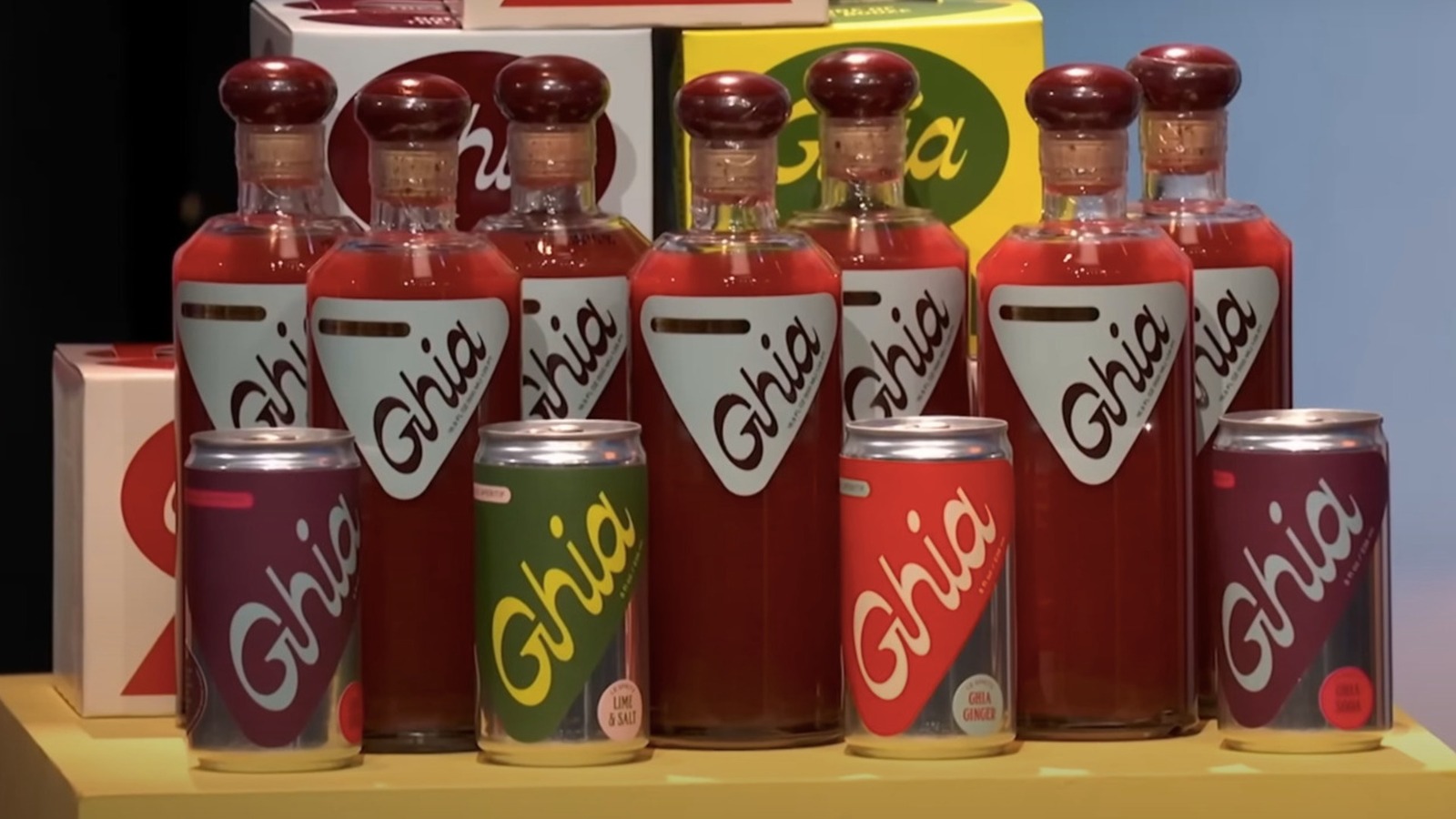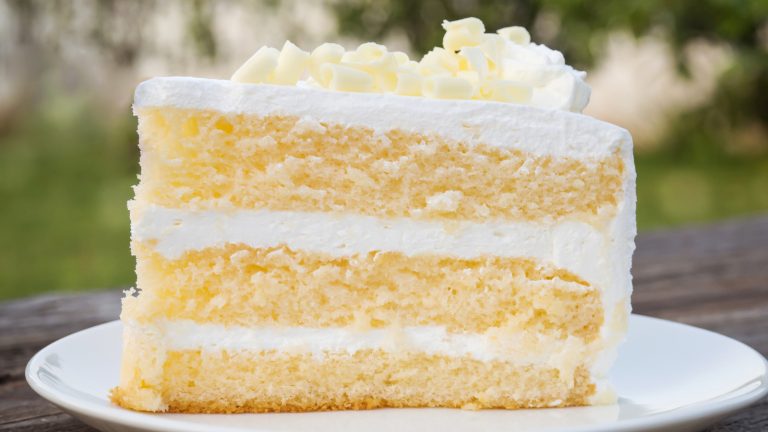We may receive a commission on purchases made from links.
When Mélanie Masarin stepped onto Episode 4 of the 14th season of ABC’s “Shark Tank” in 2022, she didn’t come empty handed. Not only did she greet the panel of Sharks — including Mark Cuban, Daymond John, Kevin O’Leary, Lori Greiner, and Robert Herjavec — with samples of Ghia, her Mediterranean-inspired, non-alcoholic, light and zesty aperitif, but she also presented them with a deal that was difficult to refuse: a $250,000 investment for a 5% stake in her company, despite her raising another $6.5 million at a staggering $35 million valuation at the same time.
Even more surprising, the first $900,000 Ghia ever raised was valued at $7.5 million. Masarin founded Ghia in 2020 — the same year that the COVID-19 Pandemic changed everything. With distribution through restaurants and bar or grocery store tastings out of the question, all promotional efforts went to Instagram. Thankfully, during that time, people didn’t have much else to do other than scroll on their phones, and the company took off instantly.
Inspired by summers spent in the Mediterranean drinking limoncello with her mother and grandmother, Masarin was able to cultivate a brand aesthetic with Ghia that went beyond the drink to a lifestyle. So, how, then, did she end up walking off of “Shark Tank” without any of the investors in her pocket? You can blame O’Leary for that. But, considering its most recent valuation has put it at $50 million just a few years after airing, all of the Sharks are likely still kicking themselves.
What happened to Ghia on Shark Tank?
Upon walking onto “Shark Tank,” Masarin shared that she was born and raised in Lyon, France, and now lived in Los Angeles, California. After presenting her asking price of $250,000 for a 5% stake in Ghia, she asked the Sharks some reflective questions (via Sony Pictures Television on YouTube). “How many times have you wanted to take a night off of booze and the only option at the party was water? How many times have you wanted to take a night off of drinking and been asked if you were sick or pregnant?” posed Masarin, highlighting some of her own experiences socializing since quitting alcohol.
From there, she went on to describe Ghia and its primary ingredients — including yuzu, citrus, and riesling grapes — before presenting the Sharks with three of Ghia’s ready-made canned Le Spritzes, including one mixed with sparkling water, one mixed with ginger beer, and one Lime & Salt flavor. After cracking them open, the complimentary French references began spilling out from O’Leary and Herjavec. But it was Cuban who changed the subject back to business.
Masarin provided important details on the costs of production and revenue, sharing that Ghia had made more than $2.5 million in the last year. She then explained that the difference in equity she was offering the Sharks and Ghia’s other investors was because the stake was coming directly from her shares of the company, which she owned 57% of at the time. That’s when some of the Sharks started to bite.
Ghia after Shark Tank
When it came time to present their offers to Masarin, Greiner and John both decided to pass on Ghia because they couldn’t partake in the drink themselves due to the citrus and bitters it contained. Cuban was the one Shark to raise concerns about the high costs of storing, shipping, and securing shelf space in store drink aisles for Ghia. Ultimately, he was out, too — leaving just O’Leary and Herjavec. Herjavec was quick to offer Masarin exactly what she asked for: a $250,000 investment for a 5% stake in the company. But then O’Leary came in.
Before Masarin could accept Herjavec’s offer, O’Leary asked her to hear him out. But, for her to do that, she risked Herjavec withdrawing his offer. In the end, that’s what she did. But, rather than offering a deal that competed with Herjavec’s, O’Leary asked for double the stake for the same price. Knowing that the stake was coming directly from Masarin’s 57% share in the company, accepting the offer would mean she’d lose her majority share, forcing her to walk away without anything.
But, as everyone knows, you don’t necessarily need a deal to be successful after “Shark Tank” — especially when you’ve already raised millions elsewhere. Not only did Masarin leave “Shark Tank” with her majority shareholder position secured, but she has also successfully raised the $6.5 million she mentioned to the Sharks since. She’s also significantly grown Ghia’s annual revenue, seeing a 132% rise in retail sales in 2024 and surpassing $7 million in annual revenue.
Is Ghia still in business?
With its most recent valuation sitting around $50 million, it’s clear that, even despite not getting a deal on “Shark Tank,” Ghia is still going strong. Its dramatic growth can be seen not only in the wide range of retail stores it’s now available in across the country — including those of the likes of Target and Whole Foods — along with trendy cafes like Foxtrot and the cocktail menu of bars like Jean’s in New York City, but also in the expansion of its product line.
When Masarin presented Ghia to the Sharks, she had three ready-made Le Spritzes for them to taste, the newest being the Lime & Salt flavor. However, in the time since, Ghia has also launched a Sumac & Chili flavored Le Spritz specifically made for those who enjoy a spicy cocktail without the ABV. It and any of the other canned Le Spritz flavors can be purchased in stores, on Amazon, or via the Ghia website, where customers can build their own custom variety packs.
In 2024, Ghia also launched its Le Fizz, which is a sparkling strawberry and orange blossom version of its original non-alcoholic aperitif flavor that was presented to the judges. That same year, it also launched a berry aperitif flavor that uses fresh strawberry juice and black currants for a less bitter option — one that John and Greiner may have been able to enjoy, which therefore could have made them more willing to invest. Alas, there’s no point in looking back now. Ghia also took second place in our 2024 ranking of eight non-alcoholic aperitifs.
What’s next for Ghia?
When Masarin walked off of “Shark Tank” without an investment deal, she never looked back. Even without the Sharks’ help, she has been able to achieve all of the goals she outlined in her pitch to them — and she’s done it all while retaining her majority shareholder position. In just a few years, Masarin has successfully raised $6.5 million for her company, expanded its retail presence, grown its product line, and achieved $7 million in annual sales. But, as for what’s next for the brand, one can only anticipate Ghia’s continued domination of the non-alcoholic drink category — something some of the Sharks doubted was possible. But, then again, Masarin hasn’t looked back since, and nor has Ghia.
Without any teases for new Le Spritz or aperitif flavors for now, when it comes to the future of Ghia, you can expect to find more Ghia mocktail recipes and food pairings shared via the brand’s Instagram. One of the most recent included Masarin’s own recipe, made with fresh orange and a Ghia soda poured over ice and garnished with mint. In May 2025, the brand also shared a recipe for a frozen givré, made by blending its new sparkling Le Fizz with ice and fresh blood oranges. As for food pairings, Ghia has posted examples such as fancy loaded potato chips served alongside its Lime & Salt flavor, as well as olives soaked in its original aperitif served with a Ghia soda.





